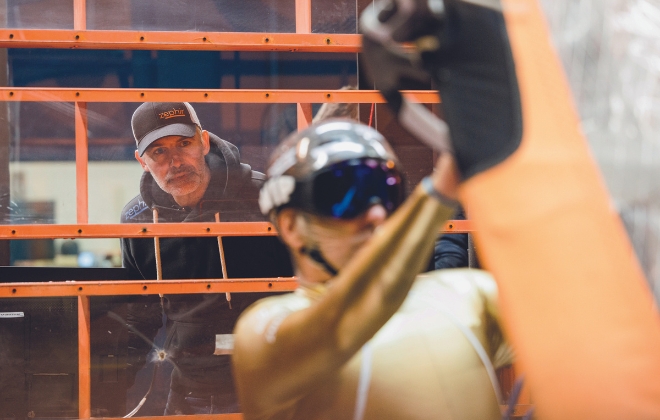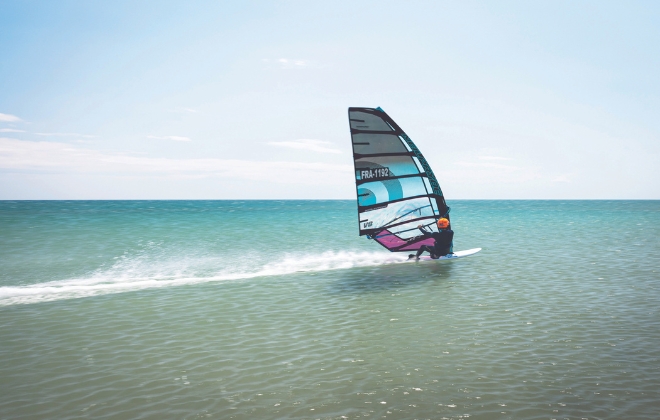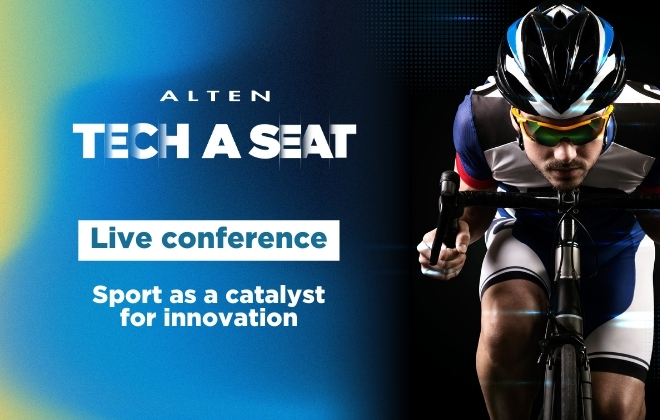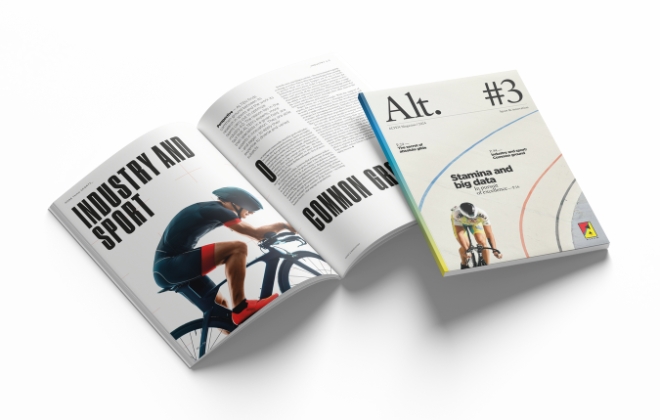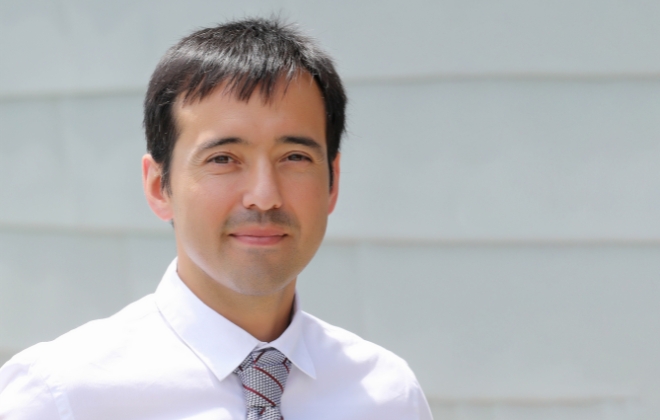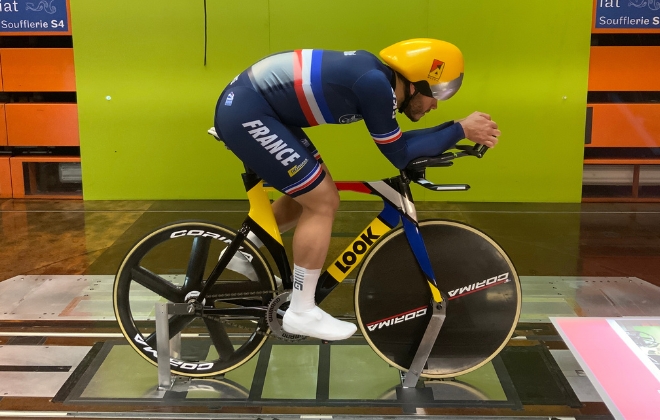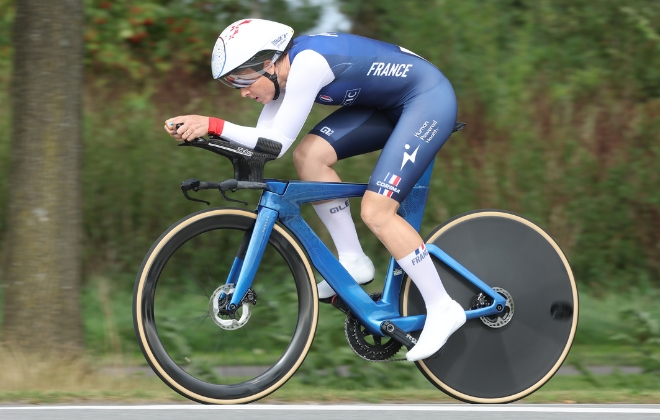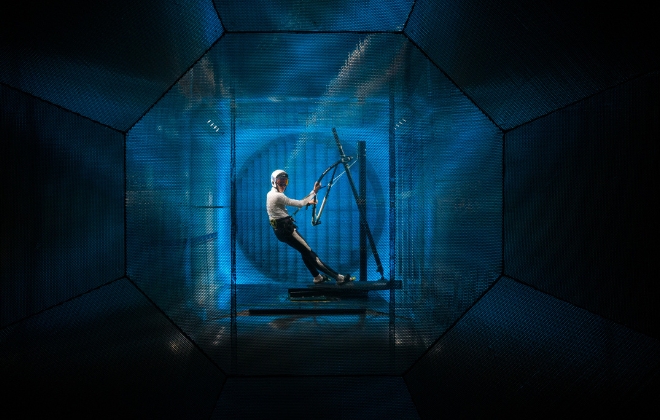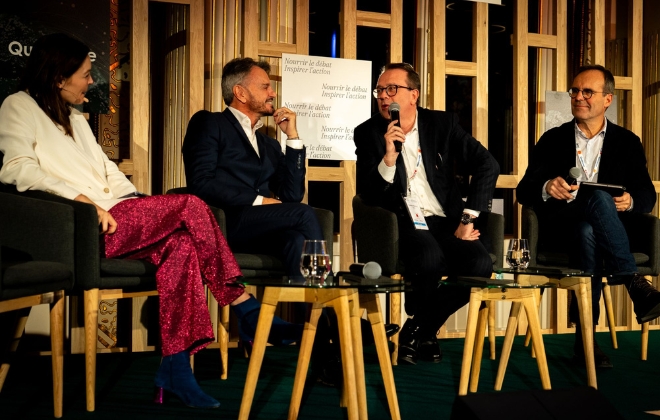The secret of absolute glide

The Zephir Project combines the quest for high performance with eco-responsibility, breaking windsurfing speed records while leaving a low-carbon footprint. Through scientific innovation, it aims to contribute to renewable energy and to the health of the environment.
The Zephir Project comprises a remarkable team of some 120 international experts and 70 companies from the world of engineering, competitive sailing, automobile racing, aeronautics and space, among many others.
Mimicking nature
The Zephir Project’s many partners and sponsors have a common goal: to unlock the secret of what they refer to as “absolute glide.” How? By understanding what nature does, merging and combining the best of human capability and know-how with the efficiency of birds and fishes. Advances in computing enable scientists to model structures found in nature through biomimicry, helping them to understand extremely complex structures. “It’s mind-boggling,” says Marc Amerigo, President of the Zephir Project.
While the project’s aim is to use nature and advanced technology to reach unprecedented speeds, the team aims to do so while impacting the future of eco-mobility. “By unveiling the secrets of absolute glide when sailing, we will be able to ‘Zephirize’ anything that glides on the water or in the air,” Marc claims. “We are coming up with solutions and creating products that are high-performing, accessible, comfortable and eco-responsible.”
The Zephir team
The Zephir Project has evolved into an ecosystem involving representatives from a range of sectors. “I trained as an engineer at the École Centrale,” says Marc. “My specialty is high performance. When you really dig into a scientific field, you quickly reach the limits of human knowledge. To go beyond that, you need to build bridges.”
Marc’s cofounder and close partner in this venture is windsurfing world champion Antoine Albeau. Antoine is the most successful sportsman in the history of France, with 26 world titles. He also holds the current world record in windsurfing speed at 53.27 knots (98.65 km/h).
The project team brings together people who know what it takes to be successful in sports: Martin Fisher, designer of America’s Cup winning sailboats; Robert Stroj, head designer of NeilPryde windsurfing sails; and Eric Barone, extreme sports champion and world record holder in downhill mountain biking, among others. At the same time, it involves experts in engineering and data sciences as well as leaders in manufacturing and industry. The project also values the participation of the younger generation. Antoine Albeau’s protégé and windsurfing promise, Pierre Schmitz, is a member of the core team as well as students from prestigious schools.
Records today, benefits for tomorrow
The Zephir Project centers squarely on the design of equipment to deliver high performance with a low carbon footprint. This includes innovative biomimetic wings with superior energy yields as well as energy-efficient hydrofoils. However, the materials must not only be efficient – they must also have optimal recyclability. “In a market with rapid technical obsolescence,” says Marc, “we need to know how to give several lives to the materials we use.” This involves, among other things, the construction of high-performance equipment reusing materials previously considered non-recyclable.
Another important objective is to raise awareness of tomorrow’s challenges – and to prepare to address them. “The innovations we develop,” says Marc “can naturally be transposed to anything that glides on water or air, or that draws energy from them – for example wind power, marine energy, eco-mobility. The fruit of our collective intelligence combined with the highest technology will open up infinite applications, with the greatest respect for our planet.”
Integration of complex systems
ALTEN’s role in the project involves highly specialized analysis and calculation of aero, hydro, and physical structures. In developing the materials used by the windsurfers – including boards, foils and sails – ALTEN Labs guide the choice of prototyping techniques, such as the use of 3D scans. Through dynamic simulation, ALTEN teams gauge the passive and active deformability of the structures and map weaknesses. Complex computational analysis of fluid dynamics allows them to capture vibrations at very high frequency and calculate their effects on the materials.
In parallel, ALTEN contributes to the dynamics of the Zephir ecosystem by helping to onboard targeted industrial partners and sponsors, and to enlist support from other scientific experts.
The proof is in the products
The trials include tests in wind tunnels at the Institut Aérotechnique (IAT), a French public research laboratory specializing in aerodynamic studies. “The IAT has an exceptional history,” says Marc. “It houses the S1 wind tunnel – one of France’s first – built by Gustave Eiffel in 1914.”
In addition to reducing overall drag, the objective of the wind-tunnel tests is to help Antoine Albeau feel maximum stability when sailing. This enables him to increase the power he transmits to his board, boosting his speed. “It was a great experience,” says Antoine enthusiastically at the end of the trials. “Thanks to a special speedsuit, my sensations were new and exciting, as if the airstream were much less turbulent around me!” Coming from a man with 26 world titles and accustomed to traveling at speeds up to 53.27 knots, this speaks wonders.












